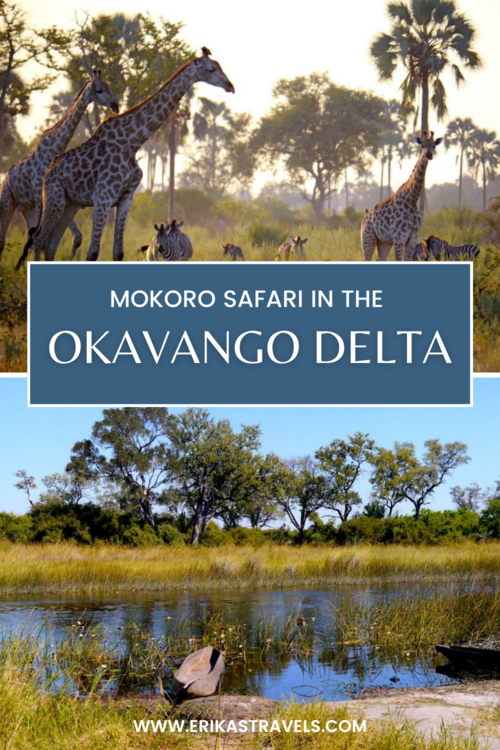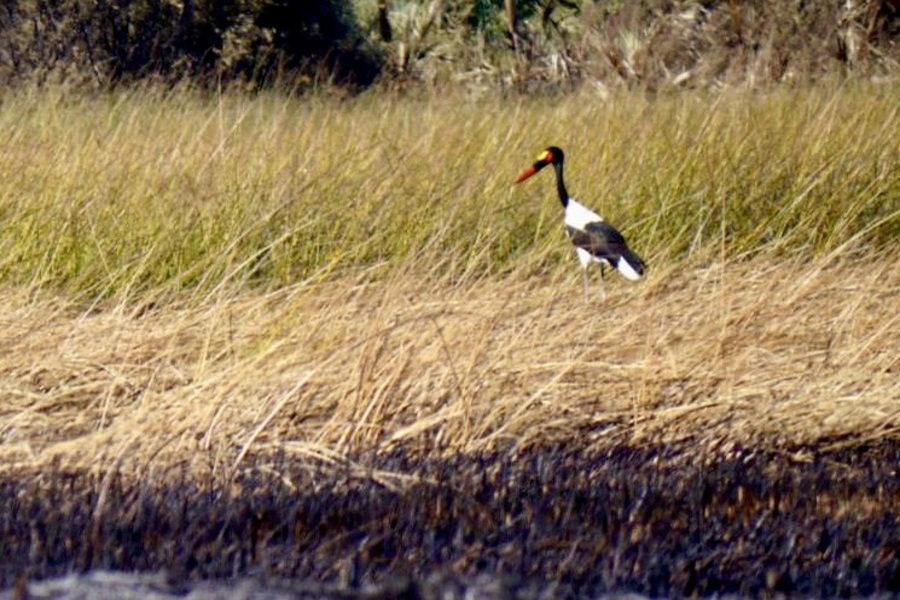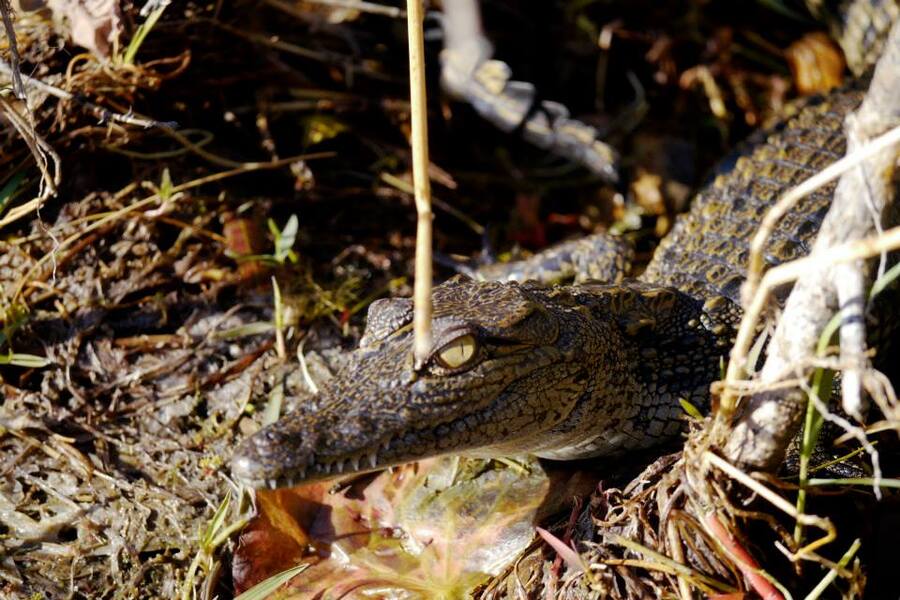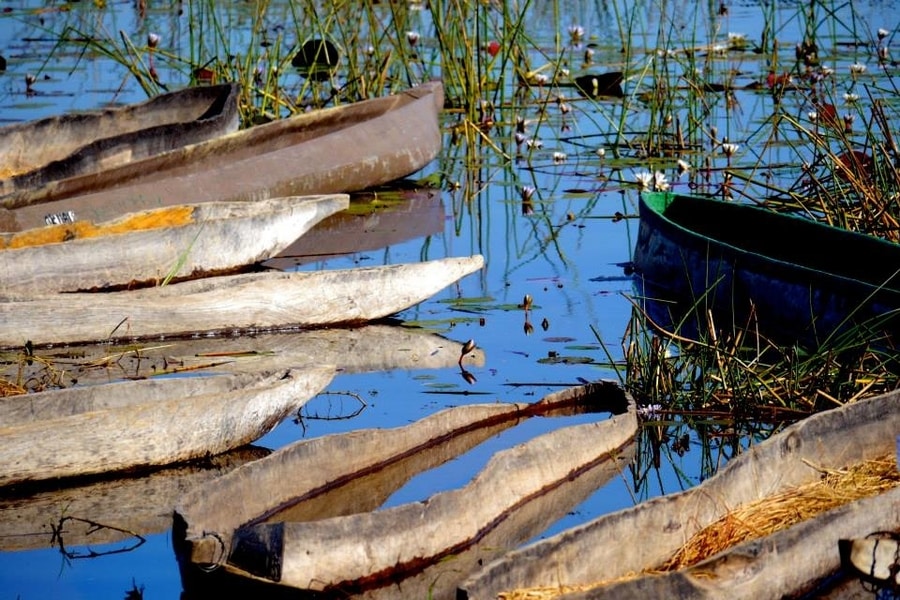
Okavango Delta Mokoro Safari in Botswana
If you’re traveling overland across southern Africa, the vast waters of the Okavango Delta may come as a bit of a surprise. Like the outstretched palm of a hand, they fan out over northern Botswana—creating a patchwork of blue and green across the parched Kalahari sands.
The Okavango is the world’s largest inland river delta. It is sprawling, expansive and wildlife-rich.
The vast system of waterlogged marshes attracts a diverse array of birds and mammals. It is largely regarded as one of the best safari destinations in Africa.
THE OKAVANGO DELTA IN BOTSWANA
The waters of the Okavango Delta originate in Central Africa and flow southward into Botswana, where they seep into the Kalahari Desert.
The Okavango conceals an astonishing array of plants and animals within its watery expanse. It consists of permanent marshlands and seasonal floodplains.
A UNESCO World Heritage Site, the delta is unique for the fact that its waters drain into the desert rather than flowing out toward the ocean.
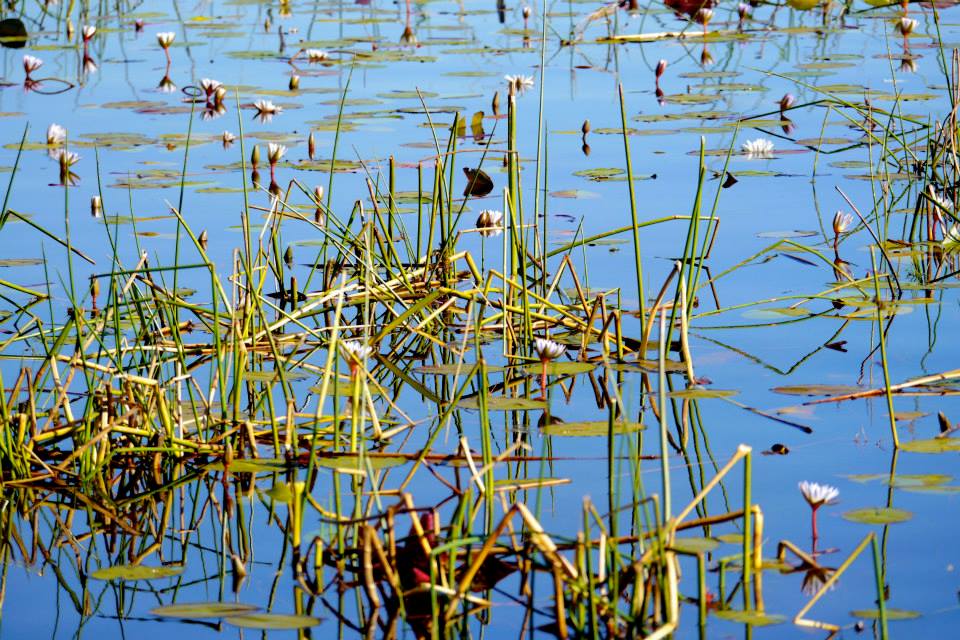
Even if you’ve experienced some of southern Africa’s other great wildlife parks—Kruger and Hluhluwe-Imfolozi in South Africa, Etosha in Namibia, Hlane in Eswatini, South Luangwa in Zambia, for example—you’ll likely be captivated by the serene magic of animal-spotting in the Okavango.
OKAVANGO DELTA MOKORO SAFARI
Shallow dugout canoes, known as mokoros, are the primary means of transport within the Okavango Delta. In the past, mokoros were typically carved out of sausage trees. However, newer boats have been made of fiberglass in order to help preserve the ecosystem.
Each mokoro seats two people plus a poler, who stands at the back of the boat and propels it slowly forward by pushing a long stick into the layer of silt below the water’s surface.
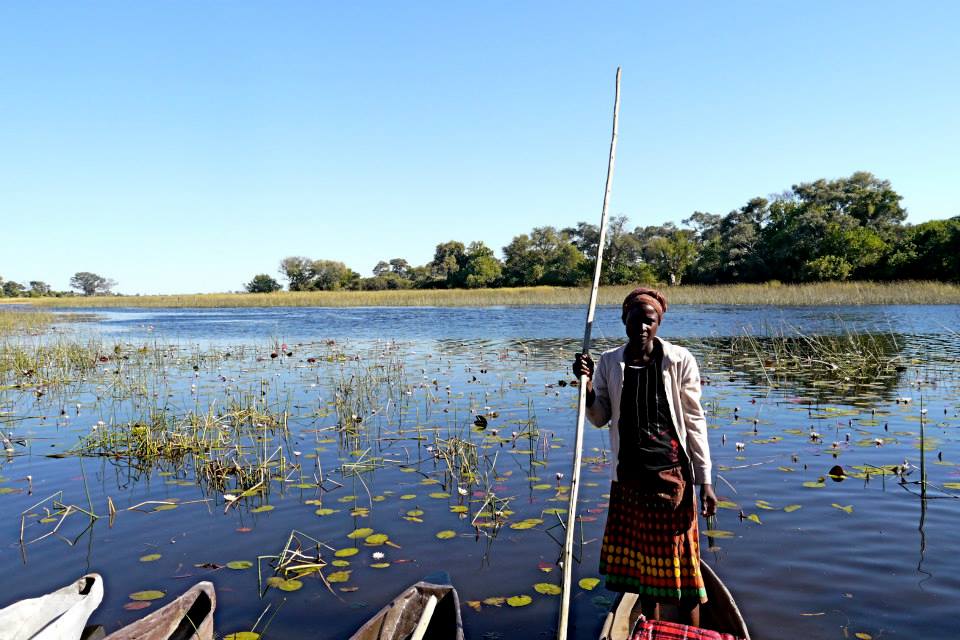
Our overnight trip to the Okavango Delta from Maun included a mokoro ride to our campsite, a walking safari at sunset, and a mokoro ride back the following day.
MOKORO TRIP IN THE OKAVANGO
As we glided along the waters of the Okavango, our soundtrack consisted of chirping birds and the rhythmic swoosh of poles dipping in and out of the water. The excursion reminded me a bit of a gondola ride in Venice, though the setting could hardly have been more different.
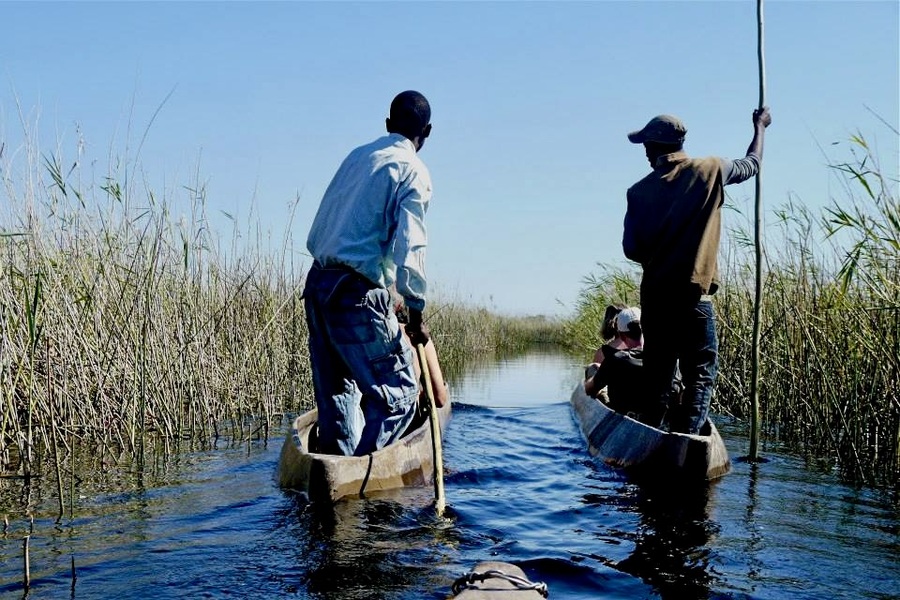
For two hours, our mokoro weaved its way through papyrus swamps and tall, undulating reeds. Though we only made modest inroads into the delta, the enormity of the body of water was apparent. I could see it stretch out for miles, its maze-like pathways covered in grasses and interrupted by islands.
We didn’t see much in terms of big game during our Okavango mokoro trip, but our guide pointed out tons of animals nonetheless.
Most of our animal sightings consisted of crocodiles and birds.
After a few hours in the mokoro, our poler took us to a secluded spot on a large island. There, we set up camp and spent time reading, relaxing in the shade, and practicing the tricky art of navigating our canoe through lily-speckled waters.
WALKING SAFARI IN THE OKAVANGO
After our mokoro boat trip, my friends and I embarked on a two-hour walk around one of the Okavango’s mopane-speckled islands. Our guide expertly followed animal tracks, bringing us face to face with zebras, giraffes, elephants and wildebeest.
The surrounding scenery was beautiful. Swaying grasses extended as far as the eye could see, dotted with occasional acacia and baobab trees.
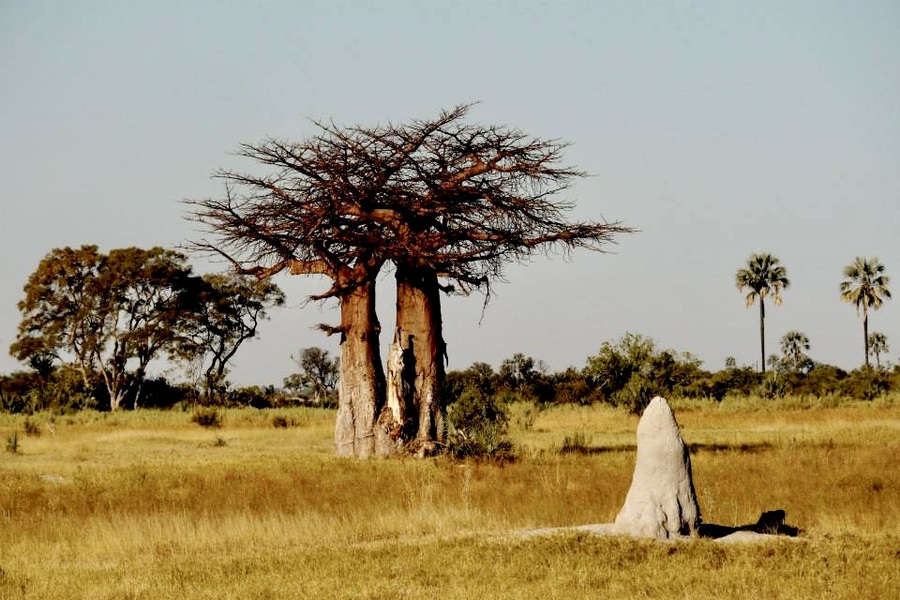
It didn’t take long before we spotted a herd of wildebeest. We approached the animals and watched as they kicked around dust and ran into the sunset.
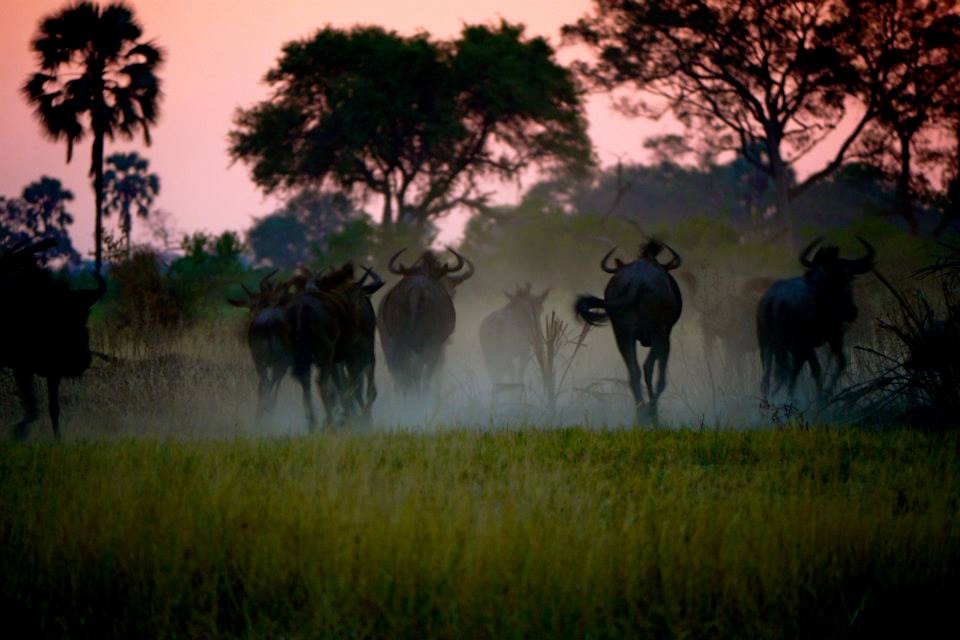
Shortly thereafter, we began spotting other large mammals. Though we didn’t see any lions or leopards, we had wonderful encounters with zebras, giraffes, and elephants.
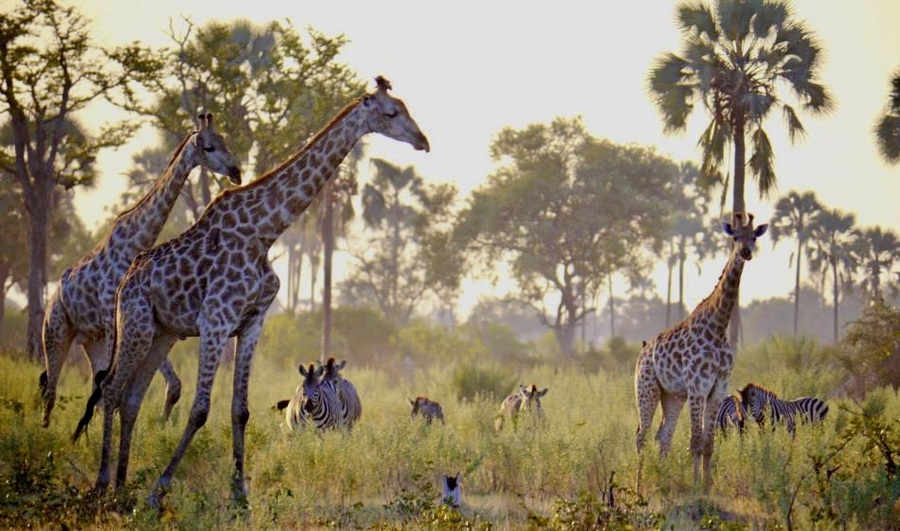
Out in the African bush, our guide’s walking stick was our only form of defense. It was a thrilling and unforgettable experience.
I’d only felt this defenseless in the wild one other time, during a walking safari in Komodo Indonesia.
CAMPING IN THE OKAVANGO DELTA
Although water dominates the Okavango Delta, there are large sections of dry land scattered throughout the floodplain.
During our two day Okavango Delta mokoro trip, we set up camp on one of these islands. There, in the shade of the trees, we fell asleep surrounded by the whispers of the wild.
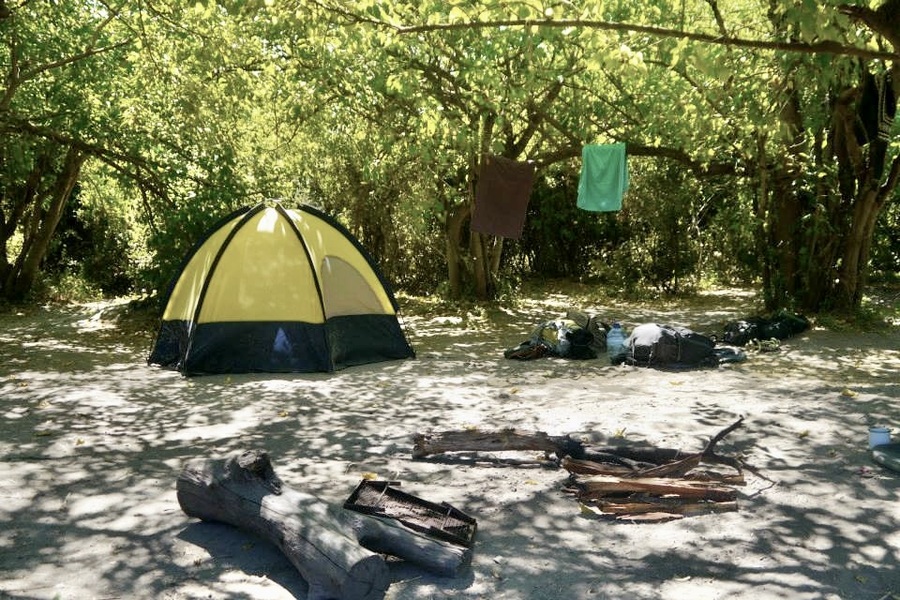
As with the camping spots in Benin’s Pendjari Game Reserve, there were no fences around our Okavango Delta campground. Our tent’s fabric provided the only barrier between us and the animals.
I’ve never felt so aware of my position on the food chain.
OKAVANGO DELTA TOURS
The Okavango Delta is an expensive place to visit. For budget-conscious travelers, its high-end accommodation options and excursions can be prohibitive.
Knowing that volunteer budgets and Okavango Delta safaris don’t really go hand in hand, my friends and I booked an overnight self-catered excursion with the Okavango River Lodge—one of the only low-cost outfitters in Maun.
Though basic, our tour allowed us to get a taste of the Okavango’s unique ecosystem without breaking the bank.
I haven’t found a way of booking tours directly through the River Lodge, but I’ve found Okavango Delta mokoro tours with similar offerings elsewhere online.
If your time and budget allow for more wiggle room, you can join a host of fabulous multi-day adventures through the Okavango Delta—ranging from 3 day tours of the Moremi Game Reserve to 12 day adventures that include Chobe National Park.
OKAVANGO DELTA WILDLIFE
In addition to containing Africa’s Big 5, the Okavango Delta is home to robust cheetah, crocodile, giraffe, and zebra populations. The endangered African Wild Dog thrives within the Okavango Delta, exhibiting one of the richest pack densities in Africa.

Aside from the more sought-after safari animals, the Okavango boasts large concentrations of lechwe, topi, wildebeest, hyena, kudu, and Sable Antelope.
Five hundred bird species and 85 recorded species of fish call the delta home, too.
ACCOMMODATIONS IN MAUN BOTSWANA
Prior to our mokoro safari, we stayed at the Okavango River Lodge.
The lodge, located approximately 13km from the center of Maun en-route to the Moremi Game Reserve, is ideal for budget travelers. It offers a choice of en-suite chalets, tented rooms with shared bathrooms, and individual campsites. We chose to camp at the lodge and booked our safari excursion from there.
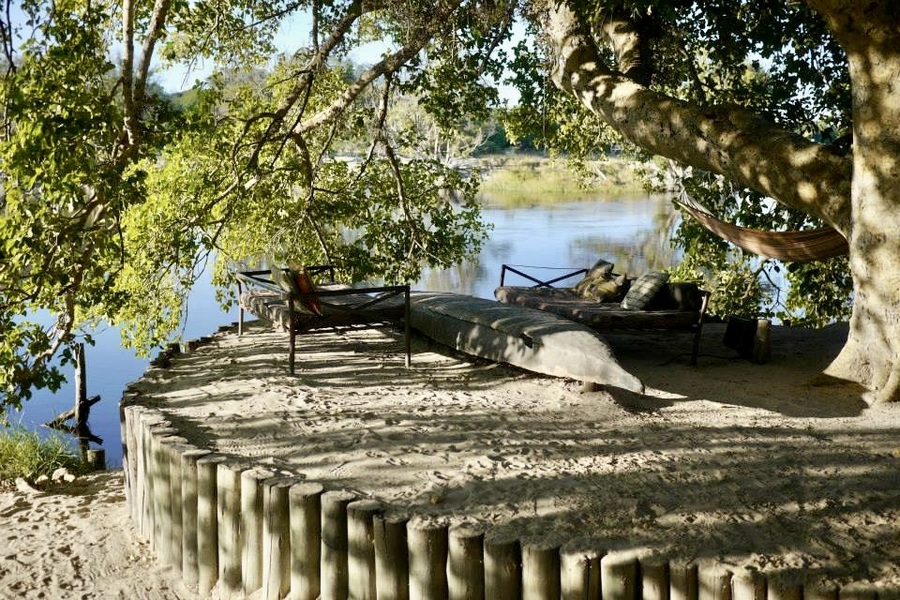
If you’d prefer to look elsewhere, there are some other fantastic lodging options near the Okavango. Many places are centered around Maun, with the Sitatunga Camp or the Acacia Cottage being ideal for travelers on a budget.
At the northern end of the Delta near the Namibian border, the Xaro Lodge boasts a luxurious serene environment that is ideal for birdwatching.
The Okavango Delta is famous for its luxury safari camps. The remote camps provide exclusive locations with five star levels of service. These all-inclusive lodges often cost upwards of $1,000 per night and can only be accessed by small airplane. They include luxury tents, meals, safaris, and park fees. They usually exclude transfers to and from Maun, which must be paid for separately.
Notable Okavango Delta fly-in lodges include andBeyond Nxabega Tented Camp and Camp Xakanaxa.
GETTING TO THE OKAVANGO DELTA
Maun is the gateway to Botswana’s Okavango Delta. Air Botswana connects its international airport with Gaborone and Johannesburg. AirLink has a flight to Cape Town as well. Flights from Kanane to Maun depart twice a week (on Tuesdays and Thursdays) and are ideal for travelers heading to or from Victoria Falls and Chobe National Park.
Buses connect Maun with Gaborone. If you’re traveling from Namibia, you’ll have to rely on a combination of shared minibuses, taxis, and hitchhiking.
WHEN TO VISIT THE OKAVANGO DELTA
The best time to visit the Okavango Delta is during the dry season, from June-October.
It seems a bit counterintuitive, but the dry season coincides with the flooding season in the Okavango.
During the summer and early fall, minimal precipitation and the arrival of flood waters from Angola make for optimal animal-viewing conditions.
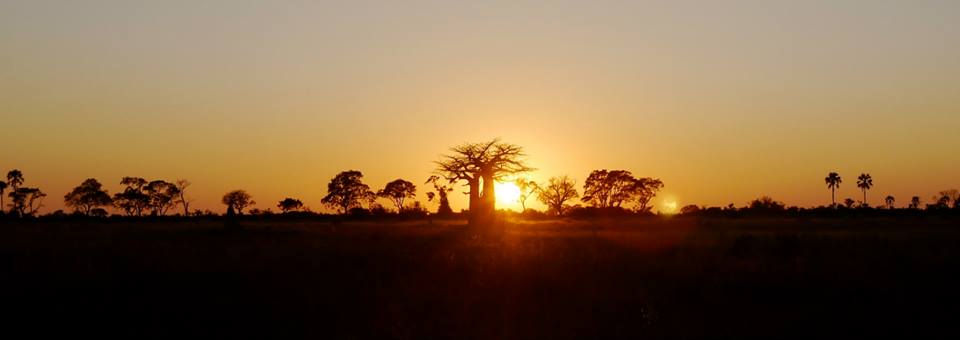
In the delta, low season lasts from December to March. The shoulder months are April-June and November.
****
Though my friends and I didn’t get to experience the fly-in luxury tent camps that gloss Okavango Delta travel brochures, our rustic mokoro adventure was everything we could have hoped for.
Our overnight Okavango Delta safari allowed us to explore the UNESCO-recognized waterways, while bringing us face to face with Botswana’s rich wildlife.
And while doing so, it gave us a glimpse into the watery wonderland and staggering ecological diversity that exists amidst the cracked earth of the Kalahari
_________________________
DID YOU ENJOY THIS OKAVANGO DELTA SAFARI GUIDE? PIN IT!
